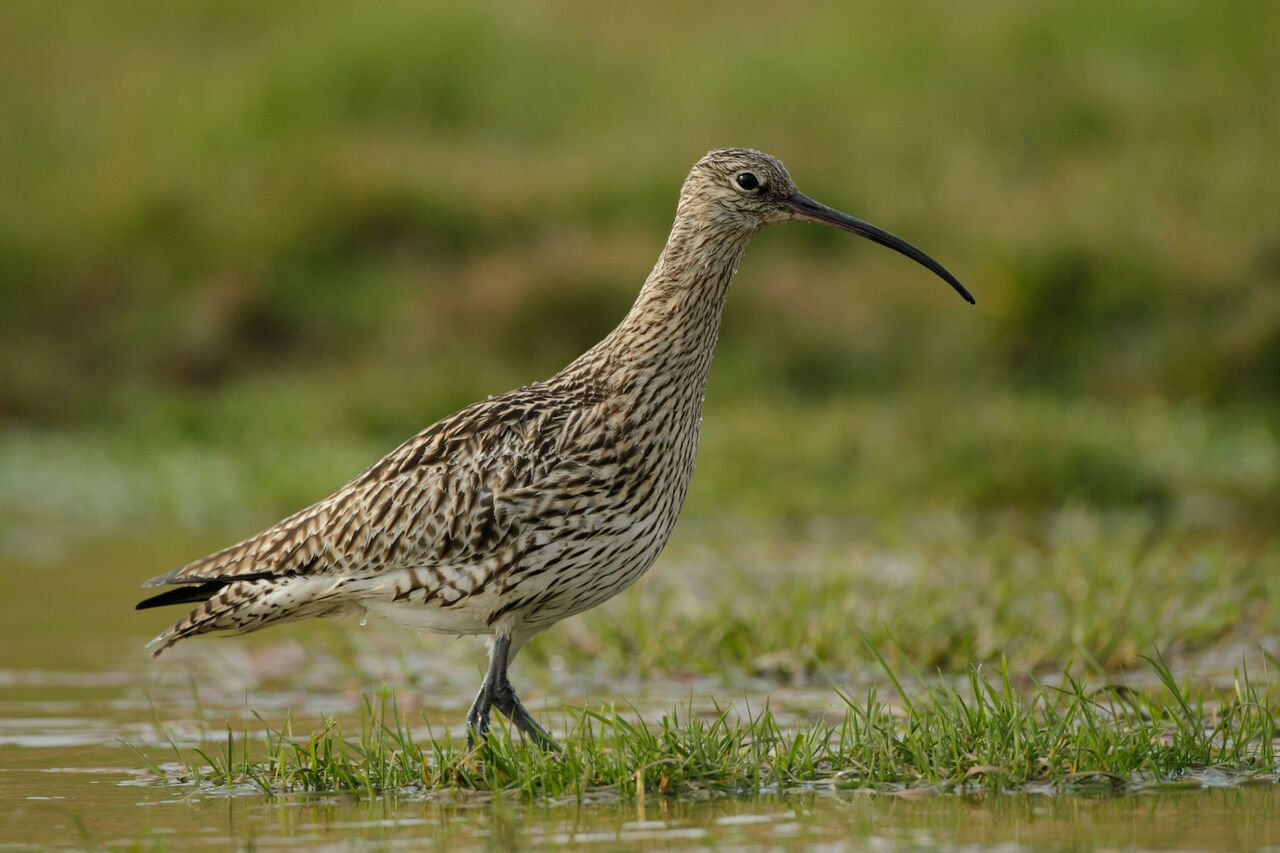
Somerset’s farmers make hay when the birds fly
- The picturesque hay-meadows of the Somerset Moors and Levels are the largest wetlands in England home to many waders and some of the rarest birds on Earth
- A quarter of the global population of curlews can be found in the UK, but breeding numbers have dropped dramatically in the last 25 years
- Identifying nesting sites and working with farmers to delay haying has halted the decline of curlews in Somerset over the last ten years
Local farmers and members of the public in the Somerset Levels and Moors are playing a vital role in helping to save one of the world’s rarest birds from extinction with support from the RSPB and Natural England.
The curlew is an elegant wading bird with a long, down-curved bill and long legs, although most will know the species by its unmistakable haunting call which many believe is the origin of the bird’s name. Sadly loss of habitat has seen curlew numbers plummet in the UK, with numbers plummeting by a third in less than 25 years – from around 100,000 pairs to just 66,000 breeding pairs.
In Somerset as landowners, farmers, Natural England, the RSPB, and local volunteers have been working together for a decade to help save the curlew from extinction. By planning haying activities to avoid curlew nesting sites curlew numbers have remained stable in Somerset while other parts of the UK have continued to experience declines.
During the summer teams of trained volunteers have been identifying curlew nesting locations. This information has been passed to farmers so that haying can be held off until any chicks have fledged and left the nest. Helping the local breeding population to remain steady at around 40 pairs every year.
Chris Corrigan, the RSPB’s director for England said: ‘It sounds so simple, but changing when a field is hayed can make a huge difference to an endangered species. Thanks to the hard work of a dedicated team of volunteers and the willingness of our farming communities we have been able to alert famers to where important nesting sites are located. This means they can plan to hay other areas until chicks have fledged and the nest is no longer needed. We still have a long way to go to save the curlew, but the lessons learnt in Somerset are a good sign that we can save the species for future generations.‘.
Sam Mitchell, a farmer with land adjacent to Kings Sedgemoor explains: ‘Since we put the land into the Higher Level Stewardship it’s been a delight to hear the distinctive sounds of snipe and curlew more regularly on the fields once again, I am very keen to do anything I can to assist to assist the wildlife of the Levels and Moors.’.
Robin Morrison, a local volunteer and nature photographer describes this work: ‘Being part of the team has provided the chance to learn so much about the behaviour and calls of these birds in their natural landscape. I’m looking forward to continuing this work next year, and ultimately seeing numbers of these waders increase.’.
The project is also helping to protect another enigmatic bird of the Levels – the snipe. Snipe are a long-billed wetland bird that perform a curious and magical display flight in the half-light of dusk or dawn, vibrating their tail feathers to produce an ascending bleating noise.
Snipe numbers have been steadily increasing in the hay meadows of the Levels over the last 10 years to 150 pairs. This success is the result of careful water level and farming management have shown great results, especially over the summer when snipes can still be found nesting in July and August.
The Somerset Levels and Moors are an important site for waders, and being home to rare and endangered species such as the curlew make projects like this vital. To find out more about this area please visit: www.rspb.org.uk/our-work/conservation/landscape-scale-conservation/sites/somerset-levels-and-moors
ENDS
[registration_form]
We should not forget that the issue of the actions of farmers were noted as a cause of Curlew nesting failure (and deaths) in the scandalous SNH action against Ravens, which managed to ignore the issue of farming methods completely.
It’s partnership working in action in both Somerset Levels and in Strathbaan, just different partners and objectives.
this is another good news story from RSPB. This along with the rise in wader numbers at RSPB Dove Stone shows that habitat improvement can be key for waders rather than the crass blanket predator control advocated by the shooting lobby.
“planning haying activities” while the Sun shines. Our language is being polluted and lost at an alarming rate
Right, that surely is a ‘public good’ ?
And its one I would really like my taxes to go towards – joyfully !
And it is no way a subsidy – it is a payment to land managers to produce something so many of us value and I want to see these farmers given the security to look after these Curlews for the indefinite future.
Mowing from the inside out is pretty good practice too